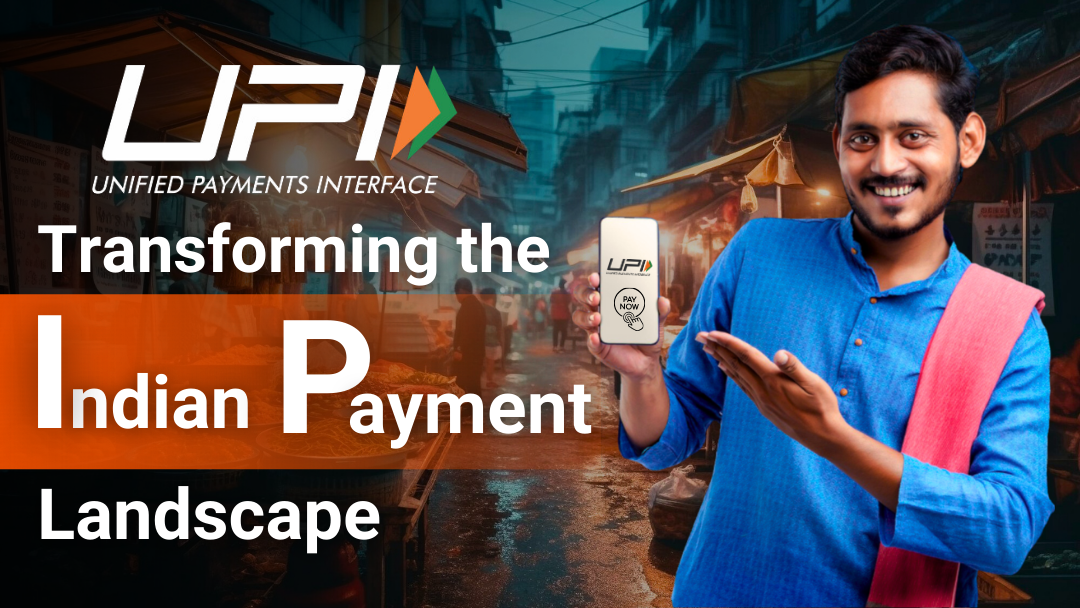UPI stands for Unified Payments Interface. It is a real-time payment system developed by the National Payments Corporation of India (NPCI) that enables users to link multiple bank accounts to a single mobile application. UPI allows users to make instant money transfers, pay bills, and make online purchases without the need to enter bank details or IFSC codes. It facilitates easy and seamless transactions between different banks and provides a safe and convenient way to transfer funds.
How does UPI’s rise affect the Indian economy?
The rise of Unified Payments Interface (UPI) has had a significant impact on the Indian economy in several ways:
1. Increased Digital Transactions: UPI has led to a surge in digital payments, reducing the reliance on cash transactions. This has resulted in greater transparency, and accountability, and reduced the circulation of black money, leading to a formalised economy.
2. Financial Inclusion: UPI has played a crucial role in expanding financial inclusion by enabling access to banking and payment services for millions of people who were previously unbanked or underbanked. It has provided a convenient, cost-effective, and secure platform for the masses to transact digitally.
3. Boosting Entrepreneurship & Small Businesses: UPI has facilitated easy and affordable payment solutions for small businesses and startups. It has enabled them to accept payments digitally, overcome the limitations of cash-based transactions, and expand their customer base. This has contributed to the growth and development of the entrepreneurial ecosystem in India.
4. Efficiency & Cost Savings: UPI has improved the efficiency of transactions, reducing the time and effort required for traditional banking processes. It has also brought down transaction costs, benefiting both individuals and businesses. The ease and speed of UPI transactions have made it a preferred mode of payment for many.
5. Fintech Innovation: UPI has fueled the growth of the fintech industry in India. It has provided a platform for various fintech companies to develop innovative products and services around payments, loans, savings, and investments. This has stimulated entrepreneurship and job creation in the fintech sector.
6. Government’s Push Towards Cashless Economy: UPI aligns with the Indian government’s vision of a cashless economy. UPI’s growth has supported the government’s initiatives like Digital India and Jan Dhan Yojana by promoting financial inclusion, reducing leakages in subsidies, and enabling direct benefit transfers.
Overall, the rise of UPI has had a transformative impact on the Indian economy, driving digitalization, financial inclusion, cost savings, and entrepreneurial growth. It has set a strong foundation for a more efficient, transparent, and inclusive economy in India.
UPI as a Transformative Tool for the Indian Market
UPI, also known as Unified Payments Interface, has revolutionised the Indian payment market in multiple ways, making it a game-changer. Here’s how UPI became a transformative force:
1. Simplified & Seamless Transactions: UPI allows users to make payments directly from their bank account using a single mobile application. It eliminates the need for traditional methods like debit/credit cards or Internet banking, making payments more convenient and hassle-free.
2. Instant Money Transfer: UPI enables instant money transfers between bank accounts around the clock. Previously, bank transfers could take hours or even days, but UPI ensures immediate and real-time transactions, facilitating faster and more efficient fund transfers.
3. Inclusion of All Banks: UPI promotes financial inclusion by allowing users to link any bank account to the UPI platform. It means individuals from both rural and urban areas, regardless of their bank, can access UPI services, fostering digital payments across the country.
4. Encourages Cashless Economy: UPI played a pivotal role in India’s movement towards a cashless economy. The ease of use it offers, along with security features, reduces the dependency on physical cash. People now prefer UPI for transactional purposes, leading to a decline in cash transactions.
5. Utility Payments & E-commerce: UPI introduced a feature called ‘Bill Payments’ that enables users to pay utility bills (electricity, water, gas, etc.) directly through the payment app. Additionally, with its seamless integration, UPI has become a dominant payment option in various e-commerce platforms, providing a quick and safe checkout experience.
6. Merchant Payments & QR Codes: UPI transformed the way merchants receive payments. By scanning QR codes, customers can directly pay to the merchant’s UPI-enabled account. This eradicated the need for costly card payment infrastructure and made digital transactions feasible for small and medium-sized businesses.
7. Government Initiatives: UPI has been actively supported by the Indian government to promote digital payments. Various government schemes, such as cashback incentives and welfare disbursements, have been linked to UPI, further driving its adoption across the masses.
Overall, UPI has eliminated many barriers that hinder the widespread adoption of digital payments, making it a game changer in the Indian payment market. Its simple user experience, quick transactions, and inclusive nature have created a robust digital payment ecosystem benefiting both individuals and businesses.
SUMMING UP
UPI has significantly contributed to financial inclusion by enabling a large number of previously unbanked individuals to access digital financial services. Through UPI, people without a traditional bank account can link their mobile wallets and make transactions seamlessly. This has empowered millions to participate in the formal economy, contributing to the country’s broader economic growth.
In conclusion, UPI has emerged as a game changer in the Indian market by revolutionising digital payments, promoting financial inclusion, and fostering a cashless economy. Its simplicity, versatility, and collaborative framework have made it a preferred payment platform for millions, transforming the way people transact in India.

